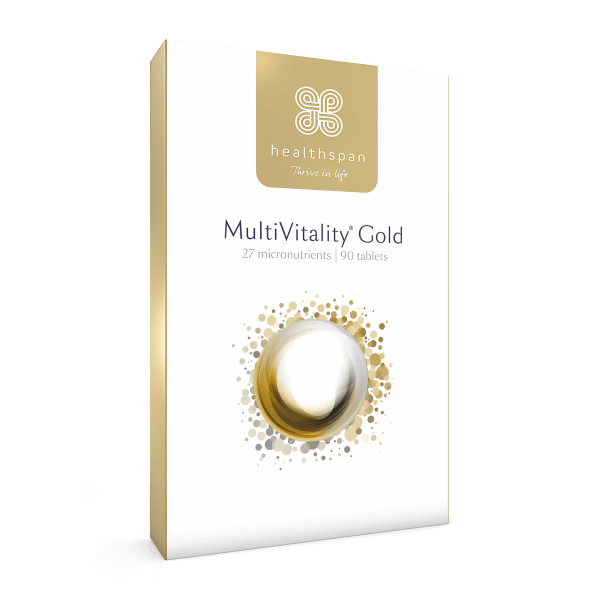Everyone knows that the number of times your heart beats each minute varies between people, but did you also know that the time between each beat also fluctuates? This is your heart rate variability (HRV), and it can be an indicator of your overall health.
🕒 6 min read
Heart rate variability, or HRV for short, measures the variation between each heartbeat. For example, if your heart rate at rest was 65 beats per minute, there's a good chance that your heart is not beating every second on the dot; instead, the distance between the beats will vary.
What influences HRV?
The higher your HRV, the more the rate will fluctuate. The lower your HRV, the less fluctuation, meaning that there is a more regular time between beats. This variation is controlled by the autonomic nervous system (ANS), which regulates involuntary physiological processes such as heart rate, blood pressure, breathing and digestion. The ANS comprises two components called the sympathetic and parasympathetic nervous systems, also referred to as the fight-or-flight mechanism and the relaxation response.
Information processing occurs in a part of the brain called the hypothalamus, which receives signals from the ANS. Such signals could be triggered by any life experience, such as an argument with your partner, poor sleep, or exciting news, and the hypothalamus responds by either arousing or relaxing different functions to retain balance in the body.
However, if we are overcome with persistent negative instigators such as stress, unhealthy diet, bad relationships, lack of exercise and solitude, this balance can become disrupted, meaning we are in a constant fight-or-flight state.
Why does HRV matter?
Having a low HRV typically means that your sympathetic, or fight-or-flight, response is dominant. If you have a high HRV, then this indicates that the parasympathetic (relaxation) response is working. Research has associated a lower HRV with various diseases, including diabetes, cardiovascular disease, obesity and psychiatric disorders.
Monitoring HRV may help diagnose complications related to specific diseases early. An example is diabetes, which is associated with an increased risk of heart disease. An extensive systematic review of people with diabetes concluded that HRV could be used to indicate the future risk of complications by predicting cardiac morbidity and mortality.1
It has been shown that HRV is strongly related to your overall physical and mental health and your resilience and ability to respond to stressors put upon the body. A higher HRV suggests better health and performance and that your body can adapt well to internal and external stressors. A lower HRV indicates that your body must work much harder to adapt or recover from a stressor.
What is a good heart rate variability?
What would be considered a good HRV for optimal health will vary between individuals, but there are some broad rules of thumb. An average HRV for a healthy individual should be between 60 and 70ms. You should look at ways to improve your HRV if it is between 40 and 55ms. Elite athletes, on the other hand, can have an HRV as high as 100ms.
How can diet influence your HRV?
Gradually increasing your HRV over time is a good indicator of health. Many people turn to health tech, such as wearable heart rate monitors, to track this.
Given the close association of HRV to the nervous system, HRV can be improved through better sleep, exercise, mindfulness activities and taking time out for self-care to reduce the level of stress put upon the body.
Diet can also influence your HRV by either elevating or reducing it. Research has indicated a few foods that have been shown to impact HRV.
Oily fish
A large study of middle-aged male twins found that those who ate a Mediterranean diet had a higher HRV than those who did not.2 Although it was unclear from the study which component of the Mediterranean diet is responsible for this positive influence on HRV, other studies have suggested that oily fish may have a crucial role to play.
Oily fish are rich in omega 3. Most studies investigating the link between these essential fatty acids and HRV have shown improvements from food and supplements.3 Although more research is needed, the results from these studies support the beneficial role of omega-3 fatty acids on autonomic tone (balancing the sympathetic and parasympathetic pathways) in humans.

Super Strength Omega 3 1,200mg
Highly concentrated, refined and sustainably sourced omega-3 fatty acids
- 240mg DHA and 360mg EPA
- Anti-inflammatory; supports brain, eye and heart health
- Benefits of oily fish for 18p a day
Multivitamin and mineral supplements
Only a small amount of research looks at the effects of vitamins and minerals (micronutrients) on HRV. The differences in study design and various measurements used makes it difficult to draw any definitive conclusions about the effects of micronutrients on HRV. Still, overall, the strongest evidence is for vitamins D and B12, particularly where a deficiency was associated with a reduced HRV.4
This potential ability of these nutrients to influence HRV makes theoretical sense, given that they can affect both heart and brain function. Vitamin D deficiency has been associated with poor cardiovascular health outcomes,5 and low levels of this nutrient are often observed in people with depression and other psychiatric conditions.6 Vitamin B12 deficiency is associated with coronary heart disease7 and diabetes,8 which are also associated with low HRV.
An increasing body of research suggests that the intestinal microbiota influences the activity of the vagus nerve, which is the parasympathetic nervous system's primary nerve that helps slow down heart rate.9 Nutrients such as vitamin D and iron can alter the composition of the intestinal microbiota,10,11 so by their effect on the microbiome, they may change vagal activity and, in turn, HRV.

MultiVitality Gold
One-a-day health support
- The whole spectrum of vitamins and minerals in one tablet
- Suitable for vegetarians and vegans
- Protect yourself from nutritional deficiencies for just 10p a day
Fruit and vegetables
Undoubtedly, eating fruits and vegetables is good for your health. Research has shown that a higher HRV has been associated with greater consumption of fruits and vegetables. One study found that a higher fruit intake significantly improves HRV.12 By contrast, another study found that a higher intake of green vegetables was associated with a reduced risk of cardiovascular disease through beneficial changes to HRV.13
Nuts
It is well established that nuts can positively impact heart health, as they are rich in monounsaturated fats and fibre, which can help balance cholesterol levels in the blood. Research has also shown that pistachio nuts in particular can help to improve HRV. One study of adults with type 2 diabetes found that after consuming a moderate-fat diet containing pistachios, there were improvements in some measures of HRV.14
By contrast, it is no surprise that a poor diet will negatively impact your HRV. One study of people with normal blood pressure found that after consuming a low-sodium diet for five days, there were beneficial changes to HRV, compared to those consuming a normal or high-sodium diet.15
Heart rate variability has become a popular way for people to monitor their personalised health, which aligns with the current trend for 'biohacking'. As science and technology evolve to improve the efficacy of personalised HRV monitoring, this may become a motivational force to make valuable diet and lifestyle alterations with real-time changes to HRV.







